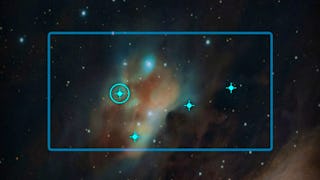Introduction to Computer Vision guides learners through the essential algorithms and methods to help computers 'see' and interpret visual data. You will first learn the core concepts and techniques that have been traditionally used to analyze images. Then, you will learn modern deep learning methods, such as neural networks and specific models designed for image recognition, and how it can be used to perform more complex tasks like object detection and image segmentation. Additionally, you will learn the creation and impact of AI-generated images and videos, exploring the ethical considerations of such technology.


您将学到什么
Understand the fundamental principles and algorithms of classical computer vision.
Apply deep learning models to various computer vision tasks.
Evaluate and implement computer vision solutions for real-world applications.
您将获得的技能
要了解的详细信息

添加到您的领英档案
23 项作业
了解顶级公司的员工如何掌握热门技能

积累特定领域的专业知识
- 向行业专家学习新概念
- 获得对主题或工具的基础理解
- 通过实践项目培养工作相关技能
- 获得可共享的职业证书

该课程共有4个模块
Welcome to Introduction to Computer Vision, the first course in the Computer Vision specialization. In this first module, you'll be introduced to how this course operates "by Hand" and "in Excel." Then, you'll build a foundation in image matrices and arrays to explore different image types: binary, grayscale, and RGB. Next, you'll transition into using functions to perform basic image operations such as addition, negation, and masking. You'll then be introduced to the concept of image transformation through linear algebra. Finally, you'll perform translation, scaling, and rotation matrix operations.
涵盖的内容
34个视频8篇阅读材料8个作业
This module dives into feature extraction—quantitative measures that describe image content. Students compute features such as image mass, center, and statistical moments to describe the shape and structure of images. These are implemented both manually and in Excel. The module also explores how to compare images using distance metrics and similarity measures, offering insight into how visual data can be analyzed, categorized, and classified.
涵盖的内容
23个视频2篇阅读材料5个作业
Filtering techniques are central to detecting patterns in images. This module introduces learners to 1D and 2D filters, covering foundational concepts like convolution, cross-correlation, and Gaussian smoothing. Through both manual and spreadsheet-based exercises, learners apply various filters (e.g., mean, Laplacian, Sobel) and morphological operations like dilation and erosion. These filtering methods enhance image features, detect edges, and prepare data for further processing.
涵盖的内容
26个视频2篇阅读材料5个作业
This module delves into key concepts of camera models and their role in computer vision and photogrammetry. You will learn about the Extrinsic Matrix, exploring how it defines the position and orientation of a camera in 3D space. Understand the Pinhole Camera Model, a simplified optical system that forms the basis for many computer vision applications, alongside the Intrinsic Matrix, which captures the internal parameters of the camera. Epipolar geometry is examined, with a focus on its significance in 3D reconstruction and stereo vision. The module covers the motivation behind epipolar geometry, breaking down its basic components, and explaining the Essential Matrix, which encapsulates the geometric relationship between camera views, as well as the Fundamental Matrix, a core component in epipolar geometry that represents the relationship between two cameras in stereo vision.
涵盖的内容
15个视频3篇阅读材料5个作业
获得职业证书
将此证书添加到您的 LinkedIn 个人资料、简历或履历中。在社交媒体和绩效考核中分享。
攻读学位
课程 是 University of Colorado Boulder提供的以下学位课程的一部分。如果您被录取并注册,您已完成的课程可计入您的学位学习,您的学习进度也可随之转移。
位教师

从 Algorithms 浏览更多内容
 状态:免费试用
状态:免费试用MathWorks
 状态:免费试用
状态:免费试用 状态:预览
状态:预览University of Colorado Boulder
人们为什么选择 Coursera 来帮助自己实现职业发展




常见问题
To access the course materials, assignments and to earn a Certificate, you will need to purchase the Certificate experience when you enroll in a course. You can try a Free Trial instead, or apply for Financial Aid. The course may offer 'Full Course, No Certificate' instead. This option lets you see all course materials, submit required assessments, and get a final grade. This also means that you will not be able to purchase a Certificate experience.
When you enroll in the course, you get access to all of the courses in the Specialization, and you earn a certificate when you complete the work. Your electronic Certificate will be added to your Accomplishments page - from there, you can print your Certificate or add it to your LinkedIn profile.
Yes. In select learning programs, you can apply for financial aid or a scholarship if you can’t afford the enrollment fee. If fin aid or scholarship is available for your learning program selection, you’ll find a link to apply on the description page.
更多问题
提供助学金,




